By and large, I’d say this week could be deemed “Animal Week.” We started with a stroll through an enormous 100-hectare public park in Invercargill while we waited for our new brake pads to be installed after thoroughly abusing what remained of ours in the mountains. To our surprise we found an impressively stocked aviary and an animal park inside, among other cool things, like the most-fun-but-risky-looking playground I’ve seen in years. The collection of different pheasants in the aviary took our breaths away. I don’t believe either of us had ever seen a male pheasant before.
Queen’s Park wasn’t the only striking thing about Invercargill. We were also impressed by its architecture, free city buses and the fact that the community supports the local polytechnic so well that Kiwis pay no fees to attend, and international students’ contribution is minimal. Seems like they have their community priorities right, working to create a high quality of life in a small city at the bottom of the world.
After leaving Invercargill, we headed northeast along the Southern Scenic Route toward Dunedin. The route takes you through a number of small country roads along the coastal rainforest and rolling pastureland referred to as the Catlins. It’s not as fast as taking a more major highway, but we hear the views are far superior to the inside route. We saw rows of tiny corrugated fishing huts dotting the riverbanks, nets holstered on the docks, gorgeous white limestone cliffs with sheep grazing below, waterfalls galore just a short walk from the road, and cavernous coastal caves carved out by a relentless Southern Ocean, but the highlights of our drives were the penguins.
Our first night out we camped at Porpoise Bay, a nearly unpopulated beach frequented by its own pod of Hector’s dolphins, the smallest and rarest dolphins in the world. They top out at a little over a meter long, and they are coastal dwellers, so they only live in New Zealand. The beach is also home to New Zealand sea lions, a much larger and more aggressive cousin of the New Zealand fur seals we’ve seen elsewhere.
Just down the road from Porpoise Bay is Curio Bay, a rocky coastal flat beyond the dunes, made of volcanic stone, that is home to what remains of a petrified forest destroyed many thousands of years ago by volcanic activity and eventually, the rising of the sea. Yellow-eyed penguins nest at Curio Bay, so we picked a rock perch and held still and silent for more than an hour as we awaited one coming home after sunset. He finally arrived, and everyone there sat stone still since yellow-eyeds are known to turn around and go right back in the ocean if they have people around bothering them, risking their lives after dark in the ocean with predators. He took a good long while to decide to make his way up, but he did walk on by and into the flax on the dunes before full darkness fell. We were both feeling like icicles by the time we reached the car.
After the Catlins we made our way to Dunedin, named after Edinburgh, Scotland. Dunedin was Edinburgh’s original name, and many of the street and neighborhood names in the city reflect that kinship. Dunedin’s architecture, especially its churches, is some of the most photographed in the country, and the city is home to NZ’s oldest university, the University of Otago. The city is built around a central “Octagon” and radiates out toward the harbor and foothills from there. The Octagon is the heart of city nightlife, and at the other end of the spectrum is the Otago Peninsula. We stayed in the former bishop’s residence, a monster of a place called Hogwartz, near the city center, and made a car trip to Otago Peninsula. The peninsula is fairly densely populated on the harbor side, but the ocean side is mostly hilly pastureland divided by drystone walls, UK-style. The peninsula is home to an aquarium, the Royal Albatross Centre, a few colonies of blue and yellow-eyed penguins, a large colony of shags (or cormorants in the Northern Hemisphere), and seals and sea lions.
After making an obligatory trip to drive down New Zealand’s “World’s Steepest Street” (no word on whether it’s really steeper than San Francisco’s, but it has a 19% grade), we drove out to see the albatross, and see we did, but only from very far away as they soared overhead. It turns out it’s breeding season. No one is allowed at the observatory to see them up close on land until next month. So, we watched videos and watched from the cafe and parking lot instead. From there the albatross looked like abnormally large seagulls, but judging from photos with scientists as a reference, they’re about the size of 10 or more very abnormally large seagulls. Next we tried our luck with yellow-eyed penguins nesting off the beach at Penguin Place, but the price was $40 each for a 1-hour tour, so we passed.
We left for Oamaru the following day, a former port town about halfway up the coast that has a thriving Victorian subculture and a few colonies of yellow-eyed and little blue penguins, the smallest in the world, weighing in at about 1kg. An Antarctic blast blew in early in the day, pelting us with hail and sleet on the way, and reportedly gifting the higher altitudes with some late-season snow. We stopped en-route at the Moeraki Boulders, a series of large boulders on the beach that look like the gods left them behind after a summer day playing bocce on the shore. They’re mostly spherical, and the cracked ones resemble giant geodes. It sounds weird, but it is truly something worth seeing, and they photograph very well—almost cooler in photos than in real life.
We stayed at Old Bones Backpackers just south of Oamaru because its double rooms and ocean view, plus the fact that it was totally empty, were too hard to resist. We’d heard it had been packed full earlier in the week, so I guess we just got lucky. We had the whole beach house to ourselves until a lone Aucklander came late afternoon, but we didn’t end up seeing much of her. She mostly stuck to her room until she needed the fire for a little heat.
In the afternoon we went looking for yellow-eyed penguins and were lucky enough to catch sight of a lone male about 2m from the viewing platform. A volunteer informed us he is wandering the cliff tops in the evenings searching for his mate, who has not returned to breed this year. We also laid out $20 at Oamaru’s little blue penguin colony to sit on the waterside grandstands and watch the rafts of little blues landing onshore after dark and heading home to their nests. We saw about 180 in an hour and a half or so while listening to commentary from colony staff. On our way out we had to check for penguins underneath before moving the car, and we ended up catching two mating on the ground as we drove away. They jumped up and ran away, so I hope we didn’t damage their chances by interrupting.
Today was a big driving day, but after reaching Christchurch, we hurried off to Willowbank Reserve, a wildlife park that features not only really awesome cuddly wallabies running free within the property, but a nocturnal kiwi house. Kiwis are New Zealand’s national bird, but their survival is endangered, like many of NZ’s native birds, thanks to predation by introduced mammals like cats, possums, stoats and ferrets. The only mammals native to NZ’s islands are bats. Everything else was introduced by either Maoris or Europeans. Because the birds in NZ have never had mammalian predators, many evolved to be flightless and nest on the ground, leaving them and their eggs totally vulnerable. The kiwi is the last of its group of relatives in NZ, which once also included a variety of moa—large hairy-looking ostrich-like birds, sort of resembling Big Bird, only brown. The moa were hunted to extinction for their oversized drumsticks by the Maori many years ago. Kiwis only have a 5% survival rate in the wild these days, so places like Willowbank all over the country work to remove eggs from the wild, hatch the chicks, then place them on predator-free islands until they are at least 6 months old and able to fend for themselves. We saw two of these tailless, almost wingless, nervous, hairy-looking little guys tonight, and they really are pretty cute.
I do feel bad for the possums we’ve seen shot and hanging from road signs or spattered on the road here. People hit them on purpose as part of the “movement” to defend NZ’s native species. I understand the need to restore the native order, but I wish someone could find a kinder way of eliminating these animals from the environment, or returning them to where they belong. Now if only we can find one of those awesome kiwi crossing signs along the highway, my kiwi experience will be complete!
SIDE NOTE: For those of you who’ve known me since I was a child, I had another run in with a biting bird that would not let go. It was as if this swan knew about that goose that latched onto my rear end on the beach in Ponte Vedra.
We’d been feeding some wallabies and deer while walking through Willowbank, and around a corner, a giant mute swan came paddling through the reeds. It stuck its head out like it wanted some food too, so I put some on the flat of my hand and held it out. The swan knocked the food to the ground, then went after my palm, seizing the meat on the heel of my hand in its beak, and seeking to pull it, independently of me, back through the fence around the pond and into its massive swan belly. I tugged back but he only clamped down, at which point Jason began thumping the swan repeatedly on the neck. With each thwack the vice only tightened until I finally asked him to stop, for fear I’d be missing a silver dollar of hand meat if this went any further.
Jason switched to using the carrot instead of the stick, and with the wave of a chunk of deer food, the swan was momentarily distracted, and I wrenched my purpling appendage free. Later we rounded the corner to the front of the swan’s pond and noted the large painted sign, saying “Don’t feed me. I bite!” The hand is still notably sore and a bit swollen. So much for my encounters in the world of water foul. I’m 0 for 2 on that one.
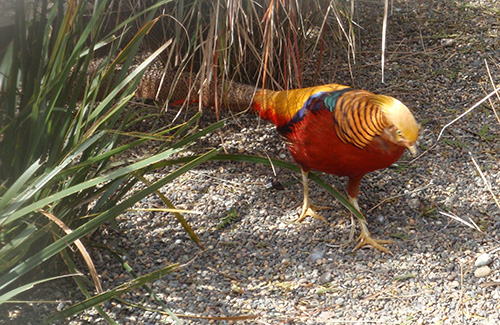
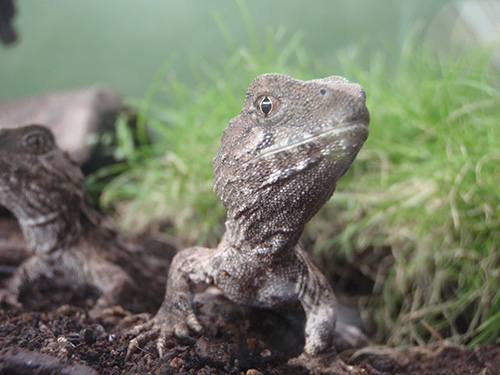
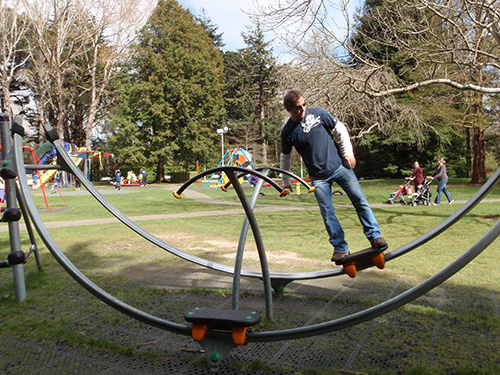
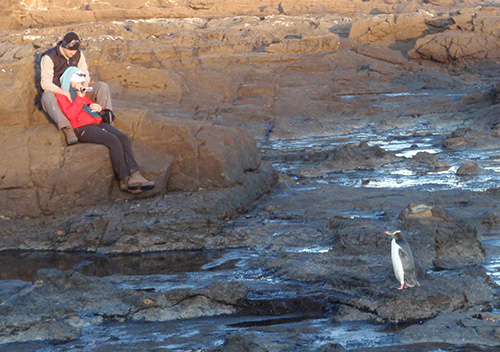
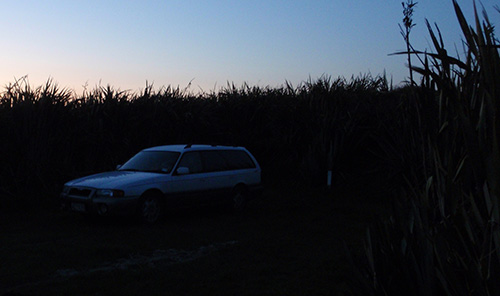
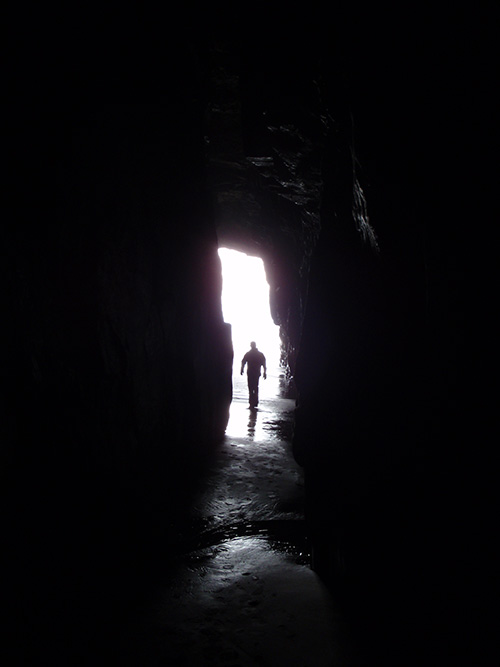


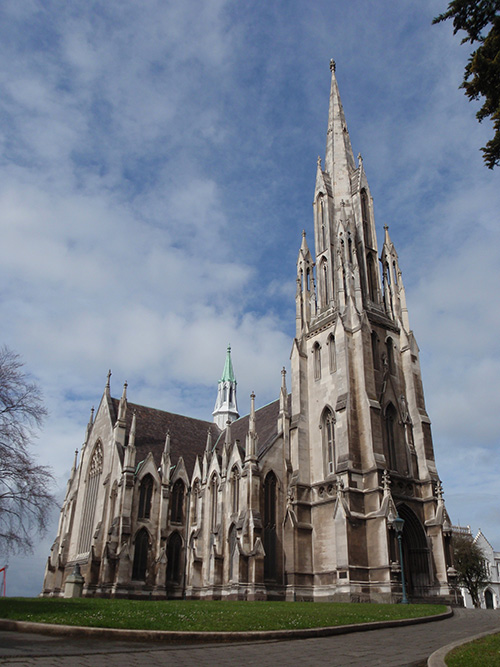
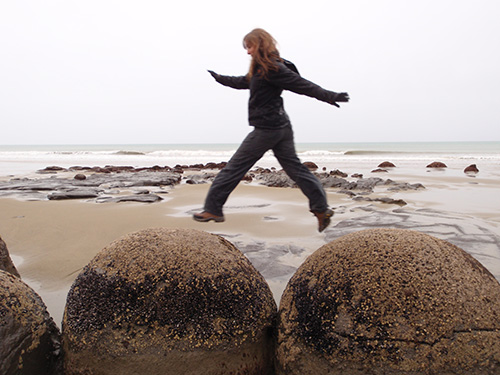

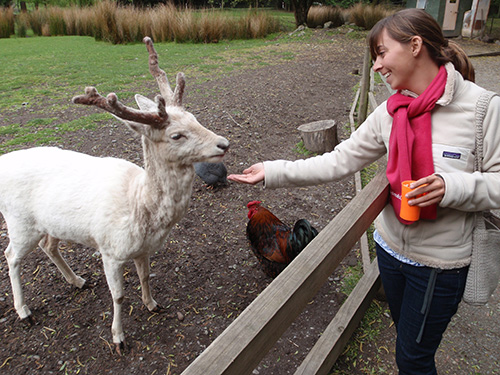
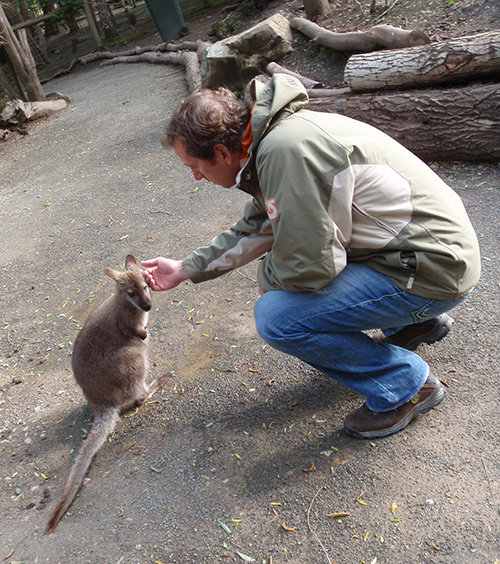

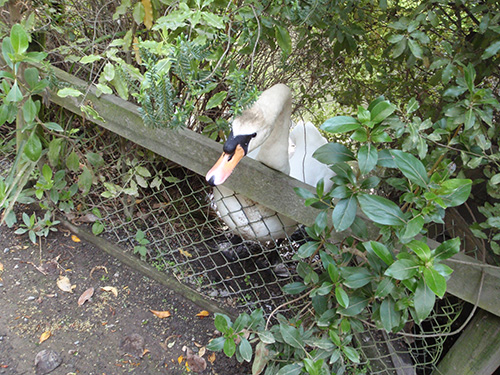
5 Responses to Close Encounters of the Animal Kind
ok. 1. J walking out of the cave? submit that somewhere for a $$$ prize. 2. Who is in the yellow eyed penguin photo? 3. Confess~ Is the wallaby still in Jason’s jacket pocket?
And just for clarification… Uncle Buddy swooped you up on that first bird encounter, before any appendage got purpled. It was a story family legacies are made from (really funny), but we honored your barely 4 year old request not to tell anyone because you were ’embawassed’. Now that you’ve outed yourself, pictures may be released!
The people in the pic are random other tourists watching penguins. Lucky dogs. The wallaby…definitely smuggled out in his pocket.
Lara, honey. That picture of you and the M. boulders made me cry. Thanks J.
Talk about biting the hand that feeds you … better than the ass I guess.
Jorge, it WAS the ass the first time, the gigantic outraged goose nearly yanked her pants off while chasing her 4 year old self down the beach. ahhhahahahahhhhaaaaa! (well, it was funny and no kids or animals were harmed, just scared)